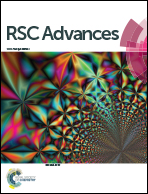Synthesis of high performance Li4Ti5O12 microspheres and TiO2 nanowires from natural ilmenite
Abstract
The low cost production of Ti-containing nanomaterials from natural resources is an attractive method for producing materials suitable for the growing energy storage industry. In this work, natural ilmenite is transformed into either Li4Ti5O12 microspheres or TiO2 nanowires through a series of chemical and thermal processes by crossing metallurgy and material science. The produced well-crystallized Li4Ti5O12 microspheres are composed of nanosized particles that show high cycle stability, coulombic efficiencies, and rate capability for C-rates as high as 20 C. The initial discharge capacities are 173.1, 168.5, 167.2, 163.4, 160.0, 155.4 and 142.7 mA h g−1 at the 0.1, 0.5, 1, 2, 5, 10 and 20 C-rates, respectively. After 100 cycles, the as-prepared Li4Ti5O12 retains 99.1%, 98.9%, 96.8% and 91.8% of its initial discharge capacities at the 2, 5, 10 and 20 C-rates, respectively. The synthesized echinus-like anatase TiO2 nanowire aggregations also demonstrate excellent cycling performance, even at high current densities.


 Please wait while we load your content...
Please wait while we load your content...